Hundreds of trees rise high into the sky and line the walking path still dotted with stones from the Edo period.
About two hours south west of Tokyo rests a stunning hidden gem of Japan. A perfect nature getaway, Hakone sits in the Fuji-Hakone-Izu National Park and is best known for its hot springs, also known as onsens. After only two days of visiting, this forested city quickly became one of my favourite Japanese destinations.
A perfect combination of history, scenery and the great outdoors, what is not to love!?
For this trip, I bought the Fuji-Hakone pass. Sold by Odakyu, this pass is designed for tourists and includes travel from Shinjuku Station to Kawaguchiko (basically the base of Mount Fuji), to Hakone and back. It also includes many of the major activities as well as all the transportation within both cities.
If you are arriving from Tokyo and have a few days to visit, this pass is absolutely the way to go! However, if you are planning on only visiting Hakone (and not Kawaguchiko/Mout Fuji area), the Hakone Free Pass is probably better suited for you.
Note: Odakyu sells many passes for travel from Tokyo to it’s surrounding cities. Feel free to explore this link to find more information on the Fuji-Hakone pass and the others they offer!
http://www.odakyu.jp/english/passes/fujihakone/
DAY ONE:
HAKONE ROPEWAY/OWAKUDANI
My first day in Hakone, I left my hostel at 10AM and took the bus from Gora station to the base of Owakudani, where the Hakone Ropeway begins. Included in the Fuji-Hakone pass, this cable car gives access to the top of the volcano as well as to beautiful views of the valley and Mount Fuji on a clear day.
Created about 3000 years ago, this area is an active volcanic zone where you can see sulphurous fumes rise from the cliffs and hot springs. You can also buy hard-boiled eggs that have been naturally blackened by the sulphurous water.
They are said to add 7 years of life per egg, so I’m excited to see what my extra 21 years have in store for me.
HAKONE SIGHT SEEING CRUISE
If you continue down the ropeway, you will arrive at the sightseeing cruise port. A beautiful way to take in the Hakone scenery, this ship sails across Lake Ashi every 30 minutes. The boat itself is well maintained and has seating areas inside as well as an observation deck above. With an old school pirate ship look, it’s a charming ride that is included in your Hakone pass!
-
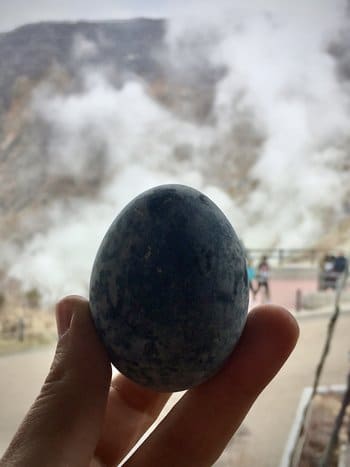
The black egg on Owakudani -
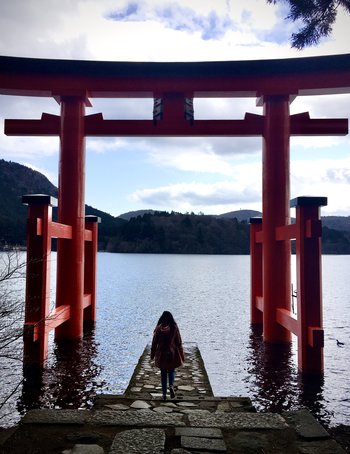
Hakone Shrine -
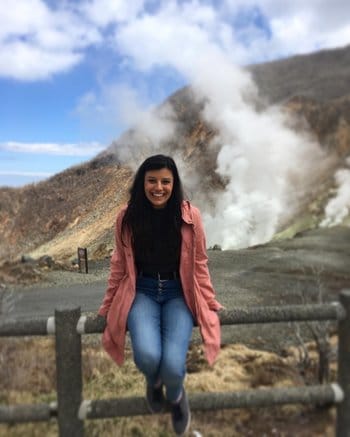
The volcanic steam on Owakudani
HAKONE CHECK POINT
About a 7-minute walk from the dock, you will find the Hakone Check Point. Once purposed to control traffic on the Old Tokaido (the road used to travel from Kyoto to Tokyo) in the Edo period, it is now a charming bit of history you can visit.
Though free to walk through, a small charge will grant you access to the few buildings and displays available. It is a very quick stop and took me only about 15 minutes to explore, but is an important part of Hakone history.
HAKONE SHRINE
The Hakone Jinja-Shrine is the main reason the city of Hakone even made it on my bucket list. The shrine itself is worth a visit but what originally attracted me to the area was the torii gate on lake Ashi. Tucked in the southeast corner of the lake, this red beauty stands tall in the water, framed by mountains and forest aplenty.
Tucked in the southeast corner of the lake, the red shrine stands tall in the water
However, keep in mind that this is a very popular place! I visited mid-day in March and had to wait about 35 minutes to get a picture. Though worth the wait in my opinion, it is best to be mentally prepared!
TOKAIDO OLD ROAD
Just slightly up the hill from the shrine is an entrance to the Tokaido Old Road. A bit difficult to find, it sits just behind a gas station and is well signed on the path. Once there, you are almost instantly plunged into what feels like a fantasy forest.
Hundreds of trees rise high into the sky and line the walking path still dotted with stones from the Edo period. I basked in the stillness of the forest, listening to the soundtrack of the trees and their residents, all the while thanking my lucky stars for the beauty around me. The trail itself was deserted and I enjoyed the serenity in silence as I walked the path from west to east to avoid the majority of the uphill climb.
The trail itself stems quite a bit further than the forested area, but I found walking from the entrance near the shrine to Hatajuku plenty sufficient. Via the Amazake Chaya, tourists can also stop at a traditional teahouse to enjoy amazake and various Japanese style snacks. More so, there is also a bus that runs on the road parallel to the trail, so it is easy to stop at any point if you get tired!
-
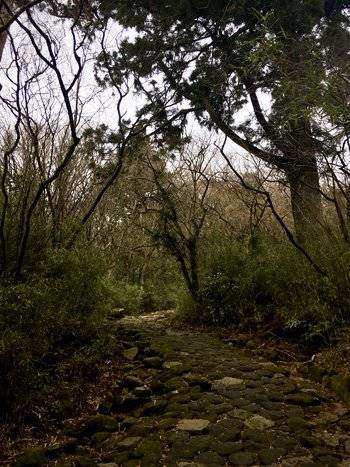
Takaido Old Road -
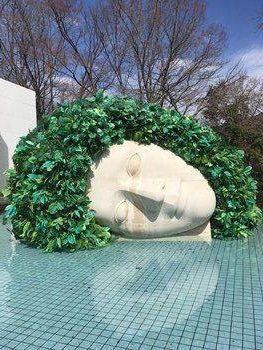
The Open-Air Museum
DAY TWO:
OPEN-AIR MUSEUM
The second day, I checked out of my hostel around 10AM and headed towards the Open-Air Museum. Almost all outside, its purpose is to highlight the harmony between art and nature. As you walk along the pathways, various art pieces dot the green hills or stand high within the mountains.
Many of the exhibits themselves are interactive; complex flower mazes or wooden netted jungle gyms for children. I very rarely visit museums on my travels but would non-the less recommend this one 100%. On a clear sunny day, there is no better way to appreciate the beauty of Hakone than by pairing it with some stunning art!
Note: There are lockers at the entrance of the museum if you need a place to leave your bags!
ONSENS
As I mentioned at the beginning of this post, Hakone is most famously known for its hot springs or “onsens”. Sourcing its water from various springs in the area, visitors and locals alike have many options when choosing their onsen in Hakone.
Though often offered in ryokans (Japanese style guest houses), many opt to visit public baths like the Tenzan or the Hakone Kamon. Similar to western spa baths, these often house a collection of hot spring, outdoors and indoors. Sometimes scented to reflect the season, I have seen sakura-scented baths in the spring as well as autumnal coloured baths in the fall.
Traditionally, the onsens are gender divided, as it is customary to bath completely nude. But don’t let this deter you! I promise, it is worth a visit to experience this classic Japanese activity.
SHOUT OUT MOMENT!
I absolutely adored my hostel, Hakone Tent! A great location not far from the ropeway and the Open-Air Museum, Hakone Tent has some great prices as well as an amazing vibe. As a solo traveller, I especially loved the lobby, where you could meet fellow travellers on their many couches, eat delicious comfort food at the bar or relax in their swing chair. The workers were incredibly friendly and helped me plan this itinerary my first night there.
Because I decided to stay an extra night on a whim, I tried both types of room they have on offer. The first was a western style bed in a single room. Though the privacy was nice, the room itself sits in the middle of the floor plan and was really noisy. The bed was comfortable but nothing special.
-
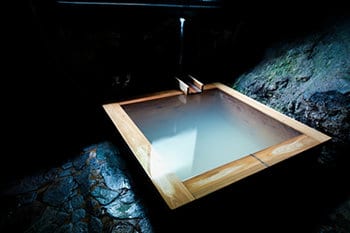
The hinoki onsen -
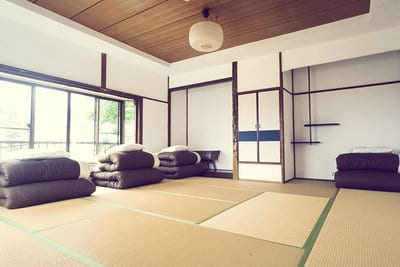
The Japanese style room -
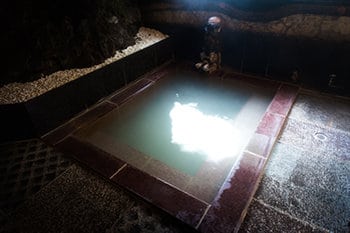
The stone onsen
The second night, I moved to a 5 girl, Japanese styled room. Similar to a ryokan, this means you sleep on a futon above tatami mat flooring. I highly recommend trying this at least once on your trip to Japan as it is significantly more comfortable than you would expect and is another traditional Japanese experience you can check off your bucket list! The hostel also offer free earplugs if you need them.
However, it was the onsens that were the highlight on my stay here. Sourced directly from the famous Owakudani hot spring, these two private baths are made out of stone or hinoki and are free to use every morning and evening. Because of their privacy, these onsens are good stepping-stones if being nude in a public bath isn’t for you. Though there can be a wait, I found them well worth it and better than the public showers!